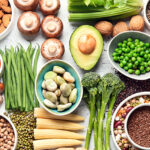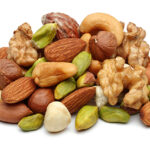Update with Dr Alan Barclay
The low down on dietary fibre (part 2)
How do we know a food is high in fibre? On packaged foods it’s easy, just check the nutrition information/facts panel. In the US, dietary fiber must be declared in the nutrition facts panel under the total carbohydrate banner. However, in Australia and New Zealand it is not a mandatory component of the nutrition information panel. Only when a claim is made about fibre, sugar or other carbohydrates (i.e., maltodextrins or starch), must the amount of fibre per serve and per 100g be listed. Because fibre is a “positive” nutrient, most manufacturers like to advise us if their foods contain appreciable amounts to draw our attention to the potential benefits of their product. Nutrition claims about the amount of fibre in food are regulated in most countries. In Australia and New Zealand, for example, to say a food is:
- A “good source” of fibre, a serving of the food must contain at least 4g of dietary fibre
- An “excellent source” of fibre, a serve of the food must contain at least 7g of dietary fibre
- “Increased” fibre, the reference food must contain at least 2g of dietary fibre per serving; and the food must contain at least 25% more dietary fibre than in the same quantity of the reference food.
These definitions are not the be all and end all. For example (and incredibly), they actually do not allow a lot of fresh fruits, vegetables or legumes to claim to be a good source of fibre! Apples, apricots, asparagus, avocado, bananas, Brussels sprouts, chickpeas, nashi pears, nectarines, some nuts (including peanuts), onions, oranges, plums, potatoes, and spinach are not eligible to make a fibre claim because of their relatively small serve sizes, which can’t be manipulated in the manufacturing process. Whereas, processed foods, such as biscuits, muesli bars, sweet and savoury snack foods, can be reformulated to comply—often by the addition of pure fibre extracts. The choice of fibre added is very important, as different types of fibres have different health effects.
How can we can incorporate more into our diets? Eating more fruits, vegetables, legumes and whole grains is of course the best way of meeting your daily fibre requirements. Try to get:
- 2 + serves of fruit a day. A serve is one medium or 2 small pieces, or a cup of canned fruit.
- 5–6 serves of vegetables a day. A serve is one cup of salad vegies, or ½ a cup of other vegies, or legumes
- 3–6 serves of wholegrain foods a day. A serve is a slice of grainy bread, ½ a grainy roll, ½ a cup of cooked brown rice, wholemeal pasta, noodles, barley, buckwheat, semolina, bulgur or quinoa, ½–2/3rd cup of breakfast cereal.
You can also add extra fibre to your meals and recipes by sprinkling on bran flakes, psyllium husks, dried fruit, or nuts and seeds.

Are high fibre foods usually low GI? No. High fibre is not a synonym for low GI. Soluble fibres may lower the GI of some foods, but they need to contain appreciable amounts, and the size of the fibre molecules needs to be large enough to have an effect. Insoluble fibres can help slow the rate of carbohydrate digestion or absorption if it is largely intact. Adding highly processed fibre does not have the same effect usually.
The bottom line is simply adding fibre to processed foods to make a fibre claim will not necessarily mean that the food will be low GI. The type and amount of fibre added and how the overall food is processed will determine if the final product is actually low GI.

For more information about the GI Symbol Program
Dr Alan W Barclay, PhD
Chief Scientific Officer
Glycemic Index Foundation (Ltd)
Email: alan.barclay@gisymbol.com
Website: www.gisymbol.com
For more information about GI testing in Australia
Fiona Atkinson
Research Manager, Sydney University Glycemic Index Research Service (SUGiRS)
Email sugirs@mmb.usyd.edu.au
Web www.glycemicindex.com








